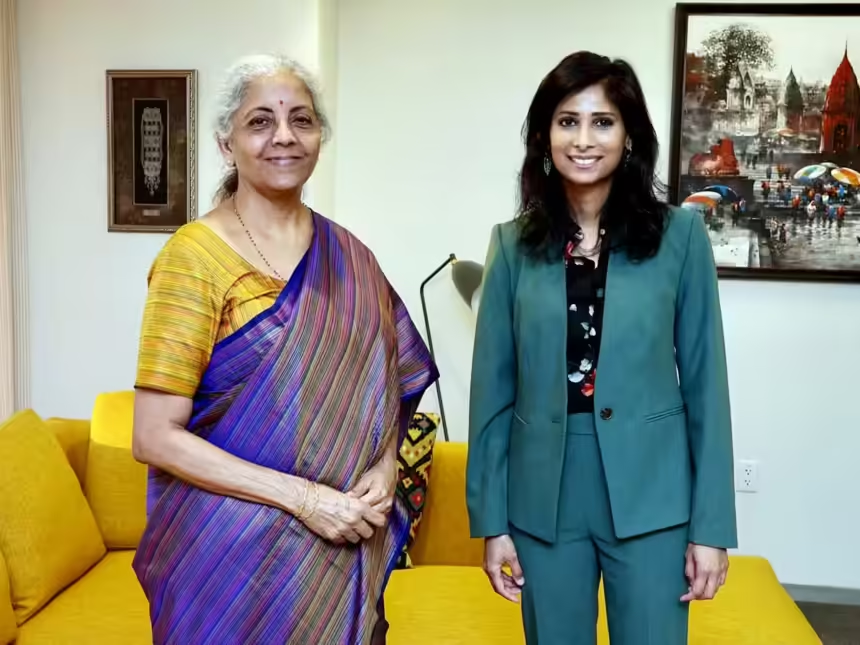Introduction
India is on the cusp of an economic transformation, with aspirations to join the ranks of developed countries. However, this ambition requires more than just a strong GDP growth rate. According to Gopinath, the First Deputy Managing Director of the International Monetary Fund (IMF), India needs significant reforms, especially in areas like labor and land policies, as well as a focus on improving its tax system. In this article, we will delve into the key areas Gopinath highlighted, exploring how they can help India achieve its goal of becoming a high-income nation.
The Need for Structural Reforms
India’s journey to becoming a developed nation is fraught with challenges. Gopinath emphasizes the need for continuous and consistent efforts across various sectors. Structural reforms are crucial, particularly in the areas of land and labor. The Indian Parliament passed new labor codes in 2019, which strike a balance between labor market flexibility and worker protection. Implementing these reforms effectively will be vital in driving economic growth.
Improving the Fiscal Space
One of the key areas where India needs to focus is improving its fiscal space. Gopinath points out that increasing the revenue-to-GDP ratio is essential. This can be achieved by simplifying the Goods and Services Tax (GST) system. Currently, India has multiple GST rates, which complicates the tax structure. By reducing the number of rates and broadening the tax base, India could potentially increase its GDP by 1% through additional revenue.
The Role of GST in Revenue Generation
GST has already started showing positive results, but there is room for improvement. Simplifying the tax structure and reducing exceptions can significantly boost revenue. A broader tax base, particularly in personal income tax, can also help. Ensuring that there are no loopholes or leakages in the system is critical. Gopinath also highlights the importance of property tax, which, with the help of modern technology, can be implemented more effectively.
Investment in Infrastructure
Infrastructure development is another critical area for India’s growth. The government has made significant strides in public infrastructure and digital infrastructure, but there remains a substantial gap between current capabilities and what is needed. Investment in infrastructure not only boosts economic growth but also improves the overall quality of life, making it a cornerstone of India’s development strategy.
Skilled Workforce and Education
To achieve developed nation status, India needs a more skilled workforce. Gopinath points out that the level of education in India is relatively low compared to other G20 countries. Enhancing the quality of education and providing more opportunities for skill development are crucial. A well-educated and skilled workforce is essential for driving innovation and increasing productivity, which are key factors in economic growth.
Women’s Labor Force Participation
Another area of concern is the low participation of women in the labor force. Currently, women’s labor force participation in India stands at around 35%, which is insufficient for a country aiming for high-income status. Increasing this percentage is not just an economic necessity but also a social one. Safety and supportive infrastructure are critical in enabling more women to join the workforce, contributing to the country’s economic growth.
Ease of Doing Business
For India to attract more investment and foster entrepreneurship, it needs to improve its ease of doing business. Gopinath stresses the importance of a favorable regulatory environment and an efficient judicial system. Reducing bureaucratic red tape and simplifying processes can make India a more attractive destination for businesses, both domestic and international.
Land and Labor Reforms
Land and labor reforms are integral to India’s growth. Gopinath highlights the need for greater flexibility in labor markets, which can be achieved through the new labor codes passed in 2019. These reforms provide a balanced approach, offering flexibility while ensuring worker protection. Land reforms are equally crucial, as they can facilitate more efficient use of land, which is vital for infrastructure development and industrial growth.
Openness to Trade
In today’s globalized world, trade plays a significant role in a country’s economic development. Gopinath suggests that India should be more open to trade and consider lowering tariffs. Currently, India’s tariff rates are higher than those of its peers, which can hinder its integration into global supply chains. Reducing tariffs and promoting trade can help India become a key player on the world stage.
Read More: Prabhas Gears Up for His Next Big Project with a New Leading Lady
Targeted Subsidies and Fiscal Efficiency
In addition to raising revenue, India can save money by implementing targeted subsidies. Gopinath mentions the example of fertilizer subsidies, which are currently non-targeted. By tailoring subsidies to the needs of specific groups, such as small farmers, India can reduce unnecessary expenditure while promoting environmental sustainability. This approach can play a significant role in creating fiscal space and supporting economic growth.
Conclusion
India’s journey towards becoming a developed nation is complex and requires a multi-faceted approach. As Gopinath highlights, structural reforms in land and labor, improving fiscal space through GST and targeted subsidies, investing in infrastructure, and enhancing the quality of education are all critical steps. Additionally, increasing women’s participation in the labor force and improving the ease of doing business are essential. With consistent efforts and the right policies, India can achieve its goal of becoming a high-income country.
Final Thoughts
While the road ahead is challenging, the rewards for India could be immense. By addressing these critical areas, India can set itself on a path of sustained economic growth, improved living standards, and a stronger presence on the global stage. It’s not just about reaching the status of a developed nation; it’s about ensuring that every Indian citizen benefits from the country’s progress.










